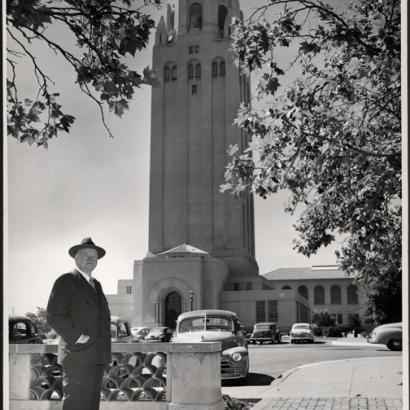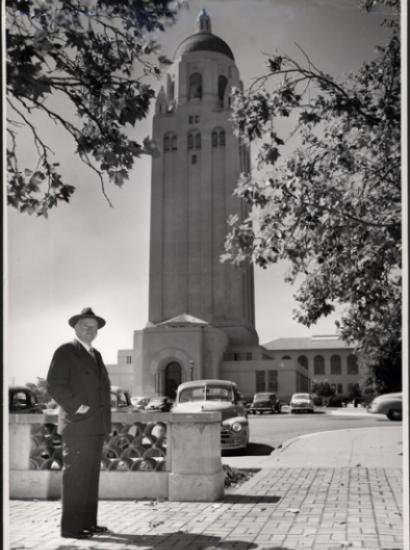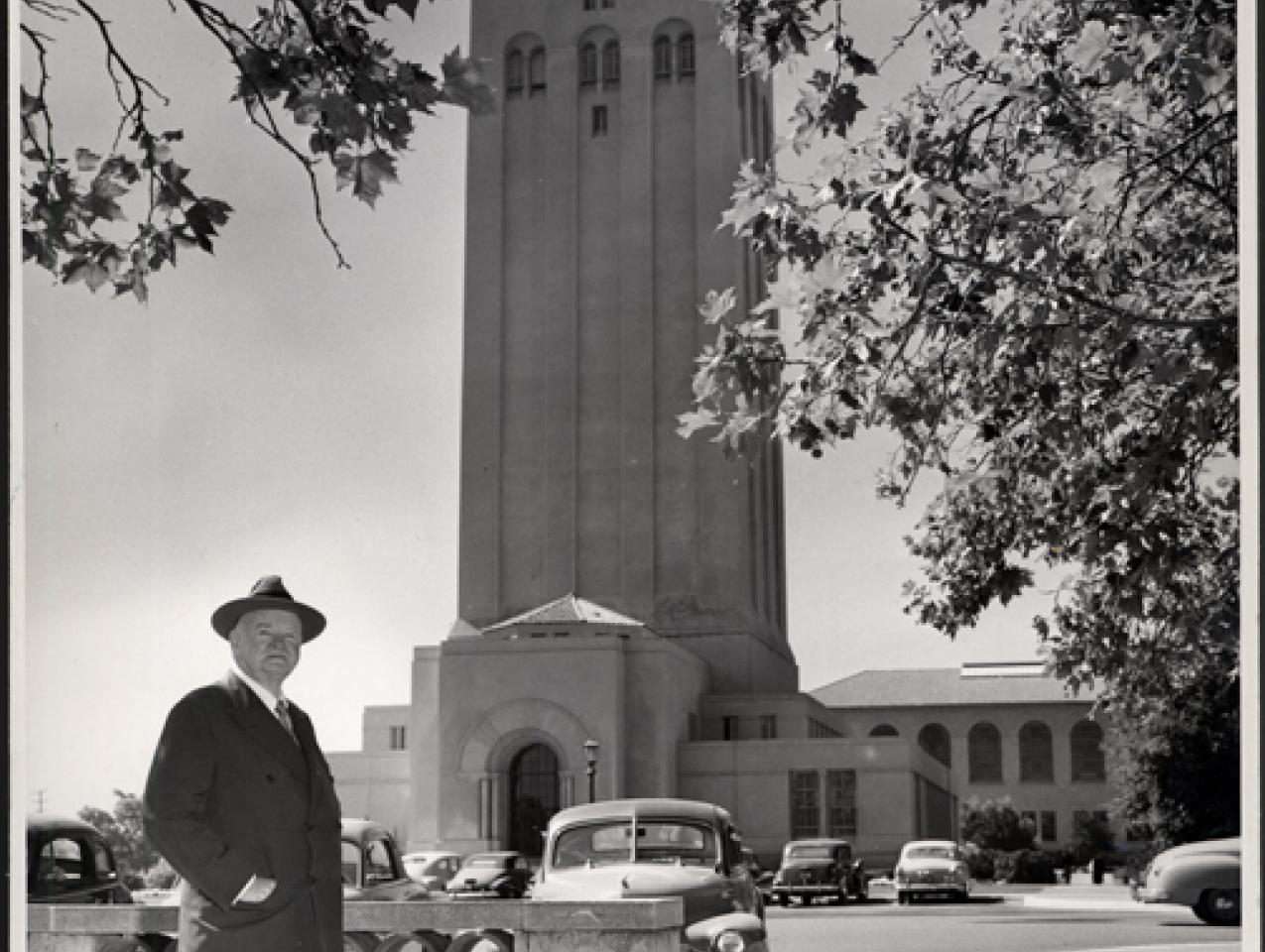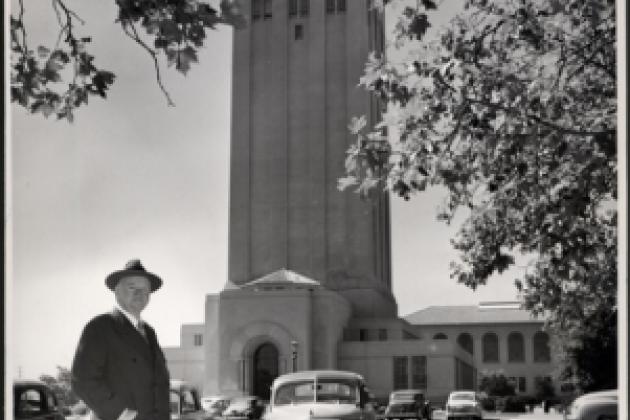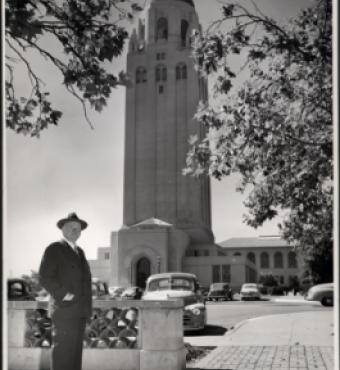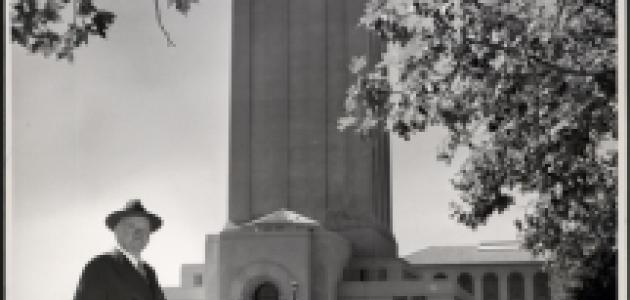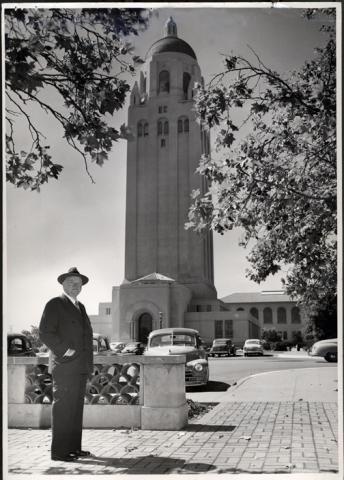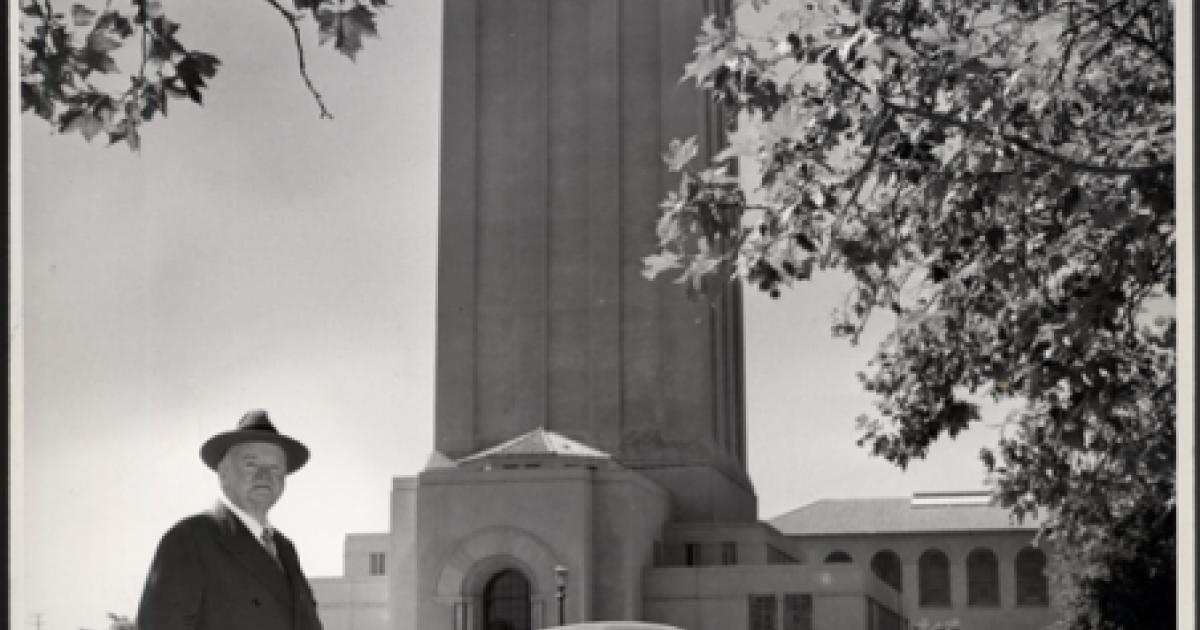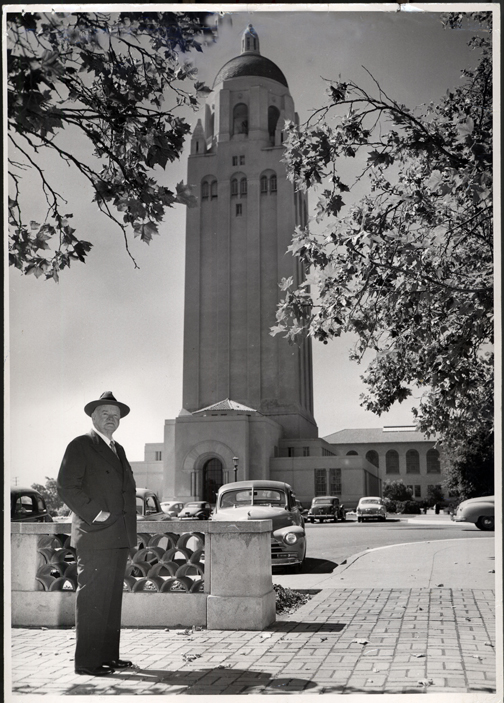
The Hoover Institution is marking the ninetieth anniversary of its founding with an exhibit titled A Revolutionary Idea: Hoover Making History since 1919. The exhibit opens on June 30, 2009. “The Hoover Library and Archives are known for leading the way in collecting efforts, library organization, and publications from primary source material. From their start in 1919, the library and archives took chances and were at the cutting edge in collecting all over the world; this exhibit provides many examples,” said Richard Sousa, director of the Hoover Institution Library and Archives. He added that the Institution has also brought together leading scholars in many disciplines for collaboration and research.
“The exhibition traces Hoover’s history from its founding to the present by means of photographs, posters, memorabilia, documents, books, and audiovisual materials that highlight the Institution’s unique place and influence in the academic and political worlds,” said Nicholas Siekierski, exhibit and outreach coordinator.
The Institution was established following World War I through the efforts and philanthropy of Herbert Hoover, the 31st president of the United States, a Stanford University graduate and trustee, and head of the Commission for Relief in Belgium (CRB) and the American Relief Administration. When Hoover was in London organizing massive relief efforts throughout and after the war, he recognized the importance of documenting those momentous events. He contacted Professor E. D. Adams of Stanford, asking him to collect historical material on war with an initial budget of $50,000—Hoover’s gift to his alma mater. (Adams had suggested in 1915 that the records of the CRB come to Stanford, but it was Hoover’s broader initiative that made history.)
Among the highlights of the exhibit are the original telegrams between Hoover and Adams, blueprints of Stanford’s iconic Hoover Tower, and numerous selections from the Institution’s more than 100,000 political posters. Other highlights include such one-of-a-kind items as Leon Trotsky’s last Soviet passport; rare, behind-the-scenes photographs of day-to-day activities at the Institution; and collections that shed light on current events, such as posters of Osama bin Laden and U.S. military publications from the wars in Afghanistan and Iraq.
“The repository has gone through a number of name changes since its beginnings as a special collection within the Stanford Library,” Siekierski said. First known as the Hoover War Collection, what finally became the Hoover Institution on War, Revolution and Peace has grown to include more than 750,000 volumes in its library and some five thousand separate archival collections. Consisting of more than sixty million individual documents, including thousands of audio and video files, the Hoover collections cover virtually the entire range of twentieth-century (and now twenty-first-century) history, politics, and economics, making it one of the world’s largest private archives.
The exhibit opens on June 30, 2009, in the Herbert Hoover Memorial Exhibit Pavilion, next to Hoover Tower, and is free of charge. Pavilion hours are Tuesday through Saturday, 11:00 AM to 4:00 PM.
For more information and images, go to http://www.hoover.org/hila/exhibits/48080107.html or contact 650-723-3563.







